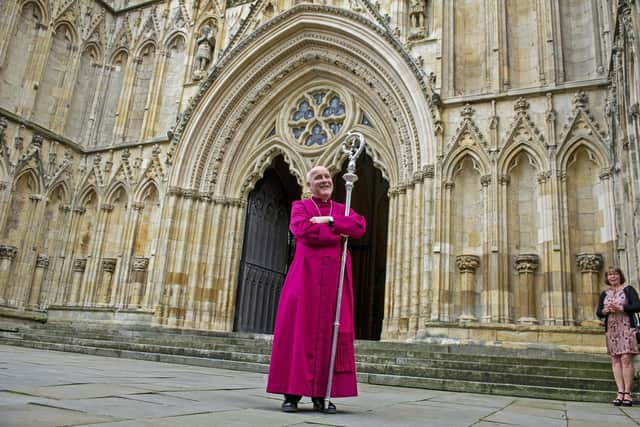How Yorkshire's historic cathedrals and churches are at the forefront of fighting climate change
Vast cathedrals and ancient churches in Yorkshire are at the forefront of the multi-million pound drive to slash carbon dioxide emissions and introduce a host of environmentally-friendly measures.
However, leading officials in the region have told The Yorkshire Post that they are faced with a huge task in adapting the centuries-old buildings to meet an ambitious target of becoming net zero within the next decade.
Advertisement
Hide AdAdvertisement
Hide AdSenior figures at York Minster have drawn up plans for one of the most ambitious developments in the cathedral’s 800-year history, by transforming the 15-acre precinct surrounding the Church of England’s most important seat in North of England.


Alex McCallion, the Director of Works and Precinct and the programme lead for the York Minster Precinct Neighbourhood Plan, admitted the cathedral’s fabric was facing up to its biggest threat since the Industrial Revolution, when pollution gravely undermined the fabric of the building’s porous magnesian limestone.
He said: “There has been a lot of talk over recent years as to how buildings might be adapted to address climate change, but the time for talking has now passed and we must take action now.
“As the Metropolitical Cathedral of the North, we have a moral duty to take a lead on how complicated heritage estates, such as York Minster, can play a part in addressing the climate emergency.
Advertisement
Hide AdAdvertisement
Hide Ad“By taking that lead and setting best practice, we hope that others will follow to reduce our impact on the planet collectively. The more extreme weather conditions brought about by climate change are already having an effect on the fabric of this ancient building. It is causing damage to the Minster, which will only get worse if nothing is done.”
It is estimated the annual net carbon footprint for the Church of England’s buildings based on energy use alone is about 189,000 tonnes of greenhouse gases.
The director of Churches and Cathedrals for the Archbishops’ Council, Becky Clark, said: “It is a huge task to achieve net zero emissions by 2030 and will need a collective effort, but it is one that we are totally committed to achieving.”
Other cathedrals in the region, including Bradford and Ripon, are placing a huge emphasis on the environment as part of the missions, and the latest green technology is being installed in the historic place of worship.
Advertisement
Hide AdAdvertisement
Hide AdBradford Cathedral became the first in the North of England to be awarded an environmentally-friendly award for the efforts that are under way, while Ripon Cathedral is shaping a five-year vision to help tackle climate change which will be launched in the New Year.
Plans at York Minster include creating a world-class centre to educate the next generations of highly-skilled craftspeople to help conserve the cathedral, as well as the nation’s other ancient buildings and monuments.
The new development is also set to house and deliver training in modern techniques, working with cutting-edge digital facilities such as modern saw technology, data scanning and computer aided design (CAD).
The Archbishop of York, Stephen Cottrell, said: “When buildings, such as York Minister, were built they made use of the most ground-breaking skills and technology that were available at that time.
Advertisement
Hide AdAdvertisement
Hide Ad“It is right that we not only honour the rich heritage of the past but similarly do likewise.
"I commend the leadership of York Minster and the continued partnership working between City of York Council and Historic England to deliver such ambitious plans and I hope this sets a helpful example of best practice for other heritage institutions to follow.
“We will only begin to tackle the climate emergency by taking such decisions and working together.”
Comment Guidelines
National World encourages reader discussion on our stories. User feedback, insights and back-and-forth exchanges add a rich layer of context to reporting. Please review our Community Guidelines before commenting.
